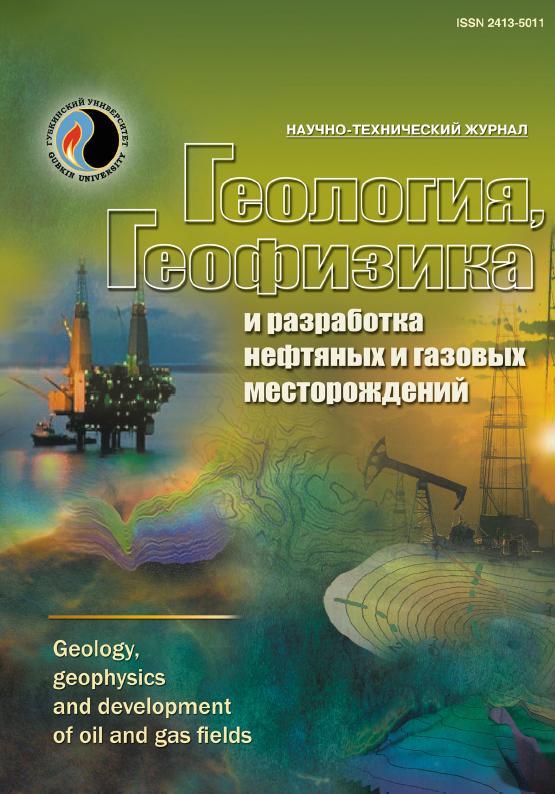Experience of estimation of operational object production characteristics by applying hydrodynamic and geochemical methods
UDC: 622.276.1/.4(262.81)
DOI: 10.33285/2413-5011-2023-10(382)-57-65
Authors:
LEVCHENKO IRINA S. 1
1,
KAGAN KIRILL G. 1
1,
LEVCHENKO VLADIMIR S. 1
1,
ERMOLOVSKIY ALEXEY V. 1
1,
PROTASOVA SVETLANA A. 1
1,
SMOLYANSKAYA OLESYA A. 1
1
1 LUKOIL-Engineering Limited PermNIPIneft Branch Office in Perm, Perm, Russia
Keywords: multilateral horizontal well, reservoir, isolated geological objects, productive sequence, Neocomian superstage, hydrodynamic, geophysical, geochemical studies, productivity factor, indicator diagram, molecular analysis of low-boiling hydrocarbons of gasoline fractions
Annotation:
The authors of the article present a method of integration of hydrodynamic, geochemical and downhole logging methods in order to determine reservoir production characteristics of a production object, located in the Russian sector of the Caspian Sea shelf. Based on the results of oil gasoline fractions and high boiling polycyclic biomarkers, obtained during exploration drilling, it was concluded that the offshore oilfield has a zonal structure. The Neocomian superstage deposits differ in oil-saturation that allows splitting the section into two objects, consisting of 1st + 2nd and 4th sequences, separated by a shale streak (the third sequence). Operational well stock of the offshore oilfield is represented by horizontal wells having sidetracks. Each well borehole shall be considered as a separate development object, which drains the reservoir having its own inflow composition which changes in the course of the production. It is proved by the results of hydrodynamic, geochemical and downhole logging surveys. Well flow tests are recognized as the main source of information about a productive reservoir. The monitoring of an oil field development by applying hydro-dynamic methods allows tracing the changes of actual productivity factor, relative fluid phase permeabilities and reservoir pressure. The comparison of hydrodynamic, geochemical studies and well logging results proves the adequacy of the data on reservoirs productivity obtained in the course of conducting complex well flow tests. The additional possibilities of productivity index calculation by applying geochemical methods allow obtaining reliable results.
Bibliography:
1. RD 153-39.0-109-01. Metodicheskie ukazaniya po kompleksirovaniyu i etapnosti vypolneniya geofizicheskikh, gidrodinamicheskikh i geokhimicheskikh issledovaniy neftyanykh i neftegazovykh mestorozhdeniy / V.F. Antropov, S.G. Vol’pin, V.S. Levchenko [i dr.]. – M.: OOO MAIK "Nauka / Interperiodika", 2002.
2. Mukhametshin I.I., Makarov D.V., Nagimov V.M. Interpretatsionnyy otchet po rezul’tatam PGI s tsel’yu opredeleniya pritoka. – OOO "TGT Servis", 2019.
3. Metodicheskoe i prakticheskoe rukovodstvo po gidrodinamicheskim i trassernym issledovaniyam na mestorozhdeniyakh organizatsiy Gruppy "LUKOIL", 2018.
4. Buzinov S.N., Umrikhin I.D. Gidrodinamicheskie metody issledovaniya skvazhin i plastov. – M.: Nedra, 1973. – 248 s.
5. Utochnenie geologicheskoy modeli mestorozhdeniya po dannym geokhimicheskogo monitoringa molekulyarnogo sostava neftey / A.V. Ermolovskiy, A.Ya. Kuklinskiy, S.Yu. Shtun’ [i dr.] // Geologiya, geofizika i razrabotka neftyanykh mestorozhdeniy. – 2021. – № 12(360). – S. 31–36. – DOI: 10.33285/2413-5011-2021-12(360)-31-36

